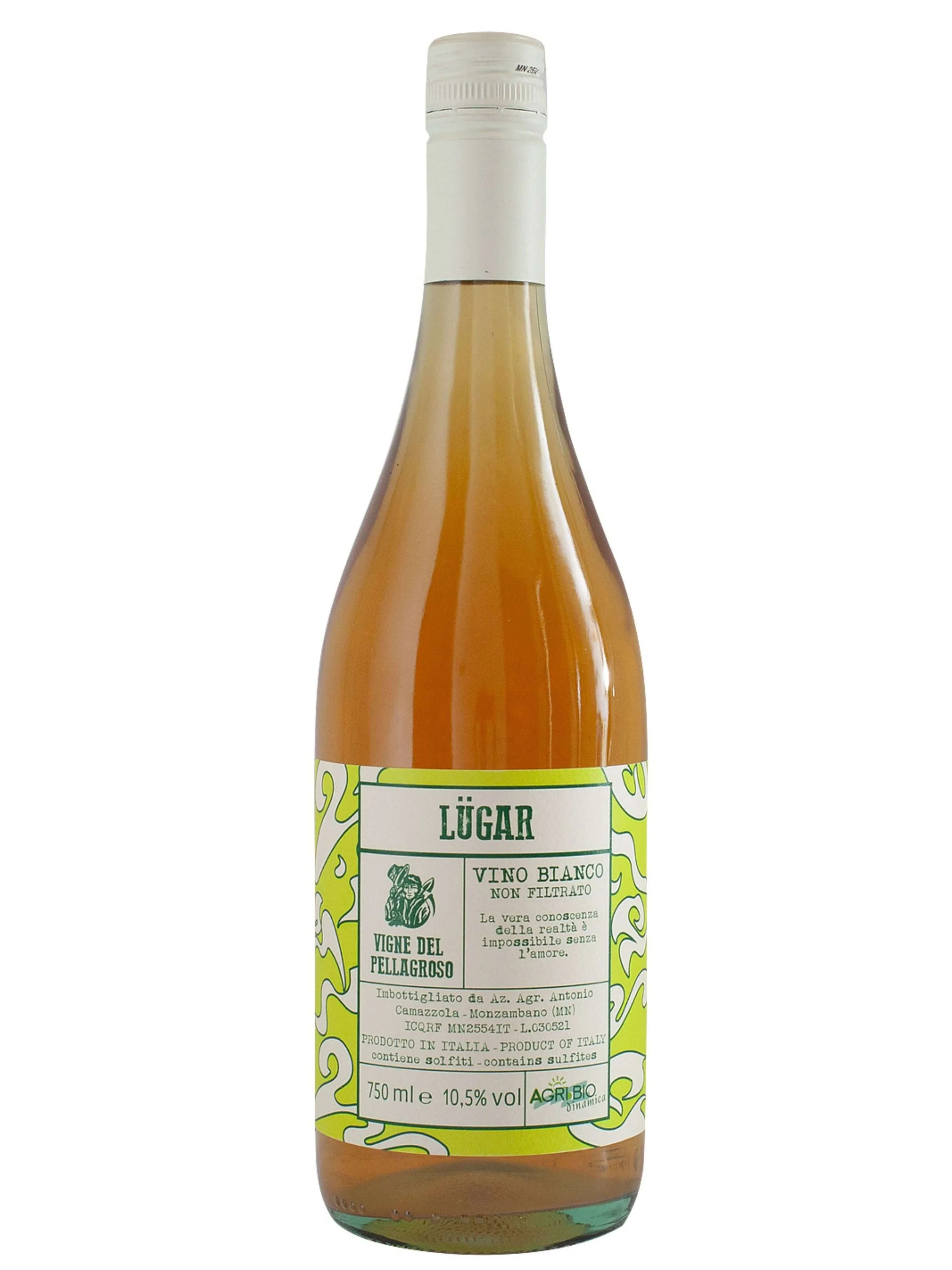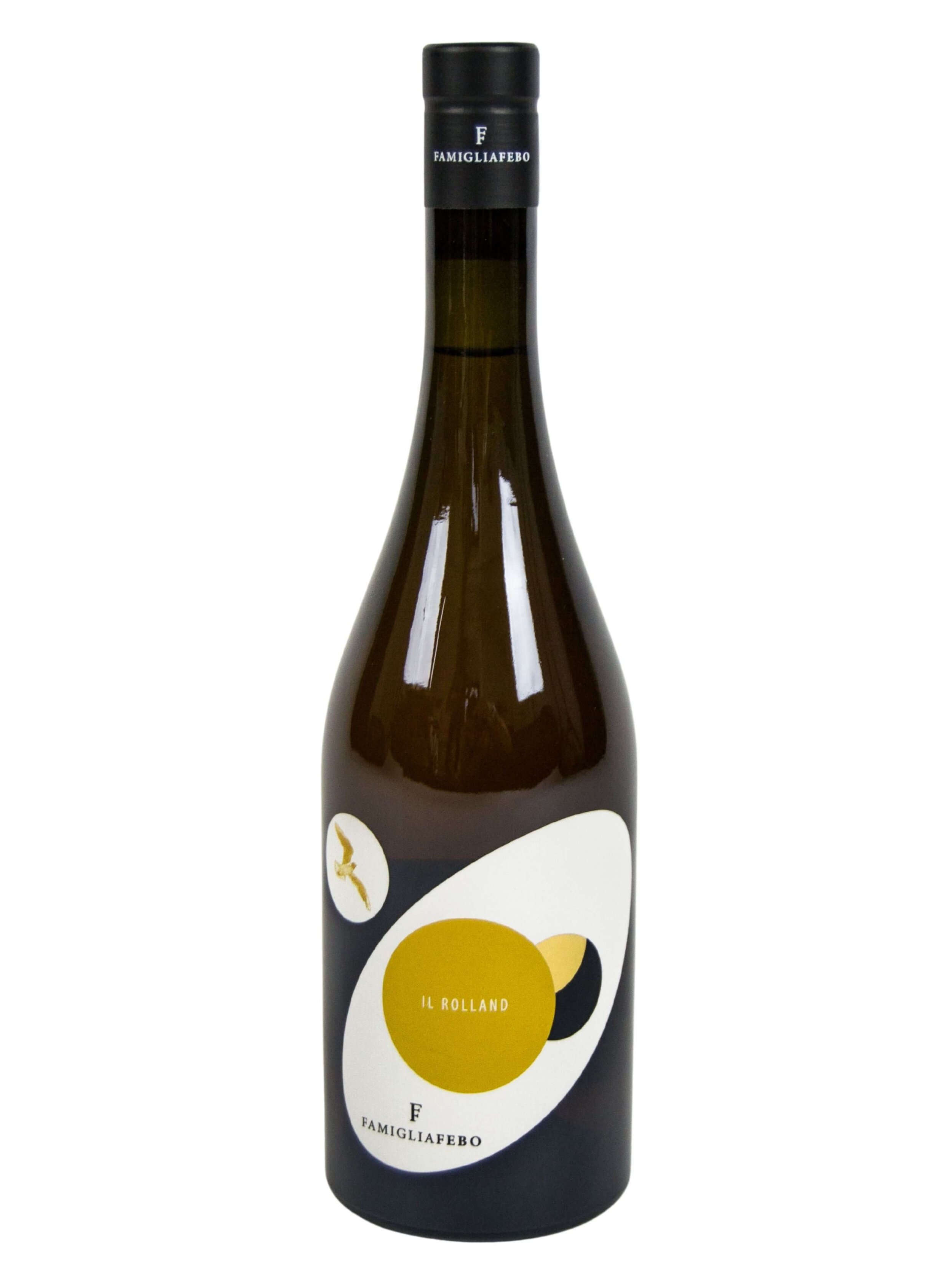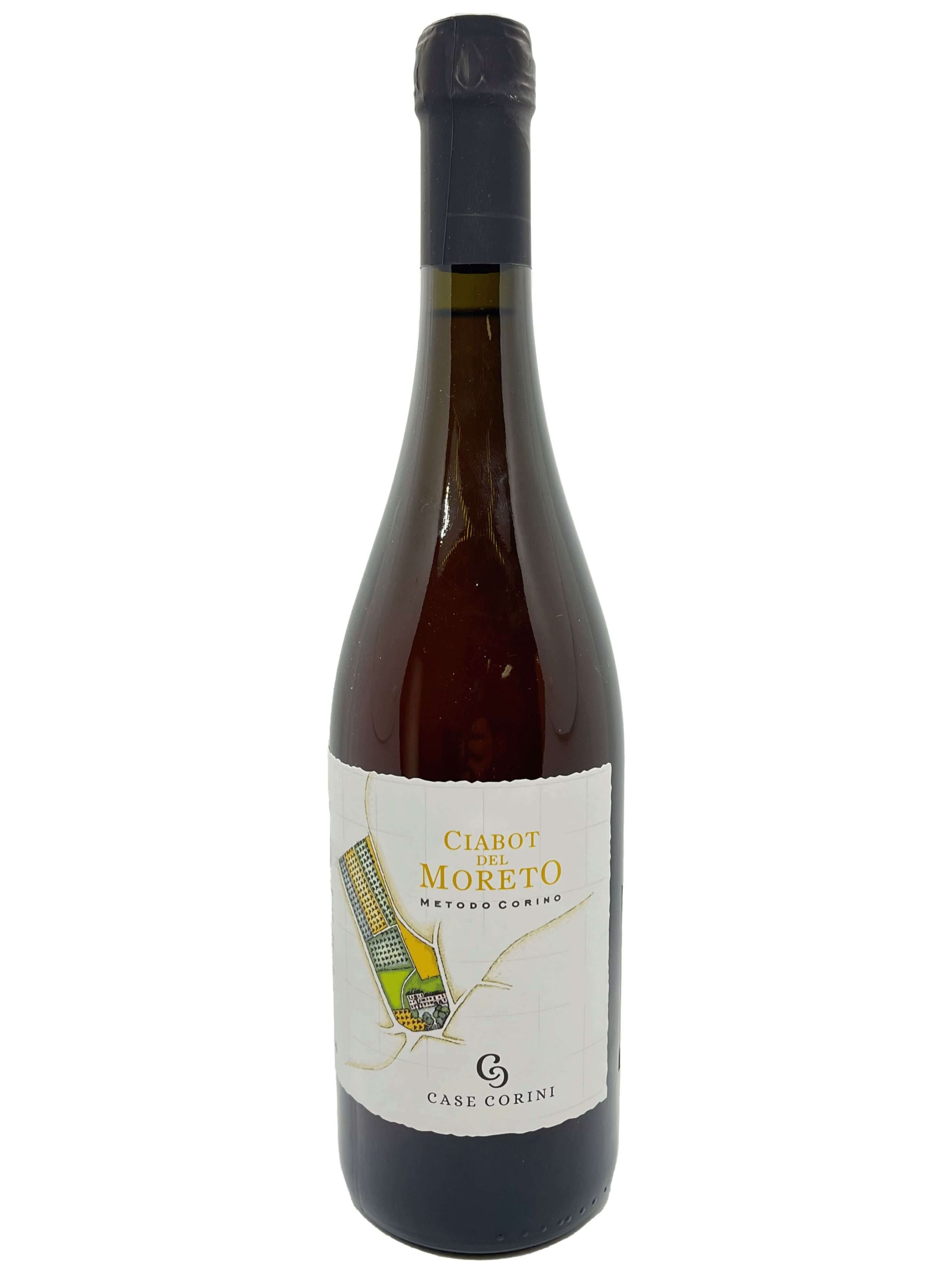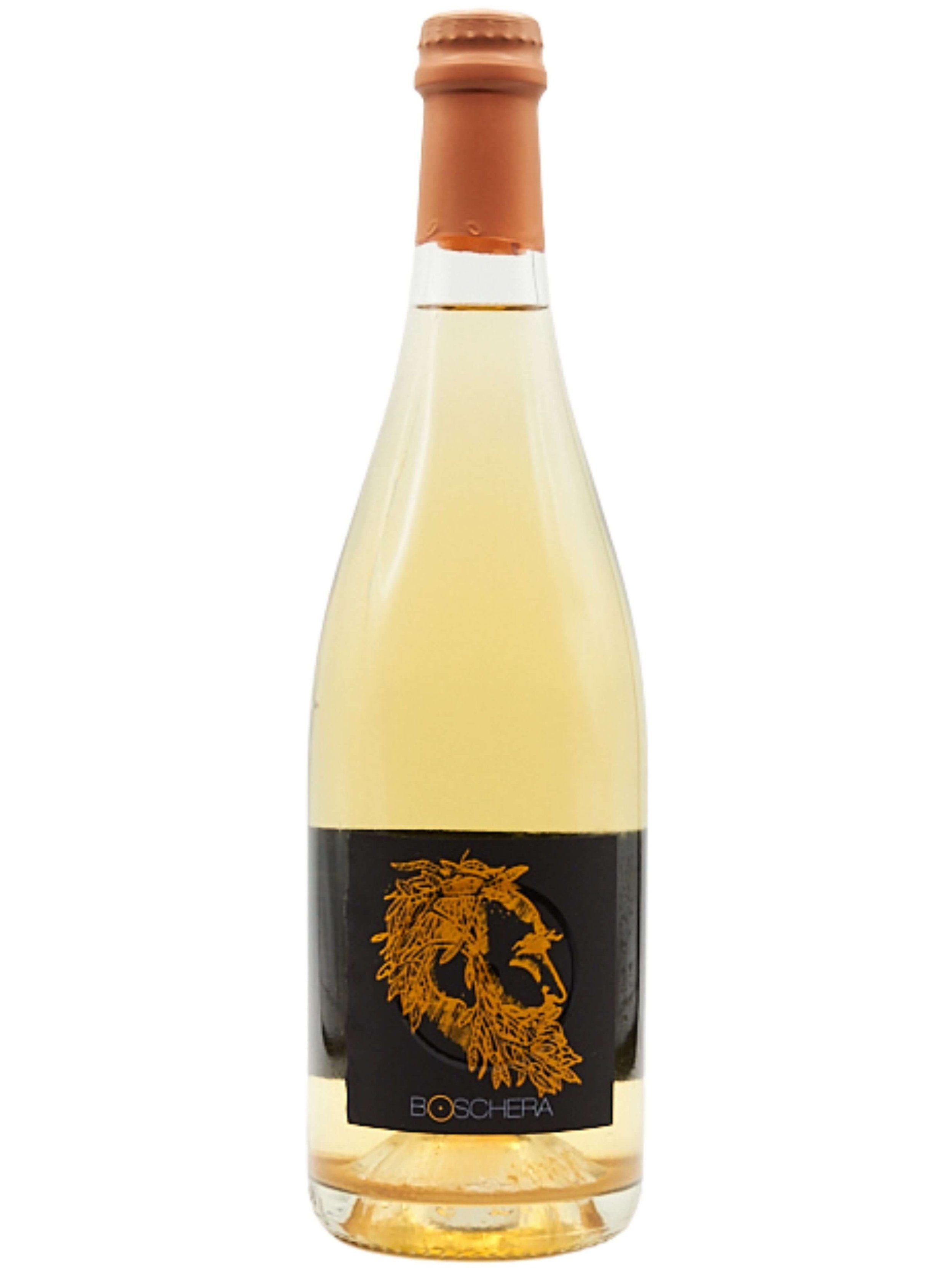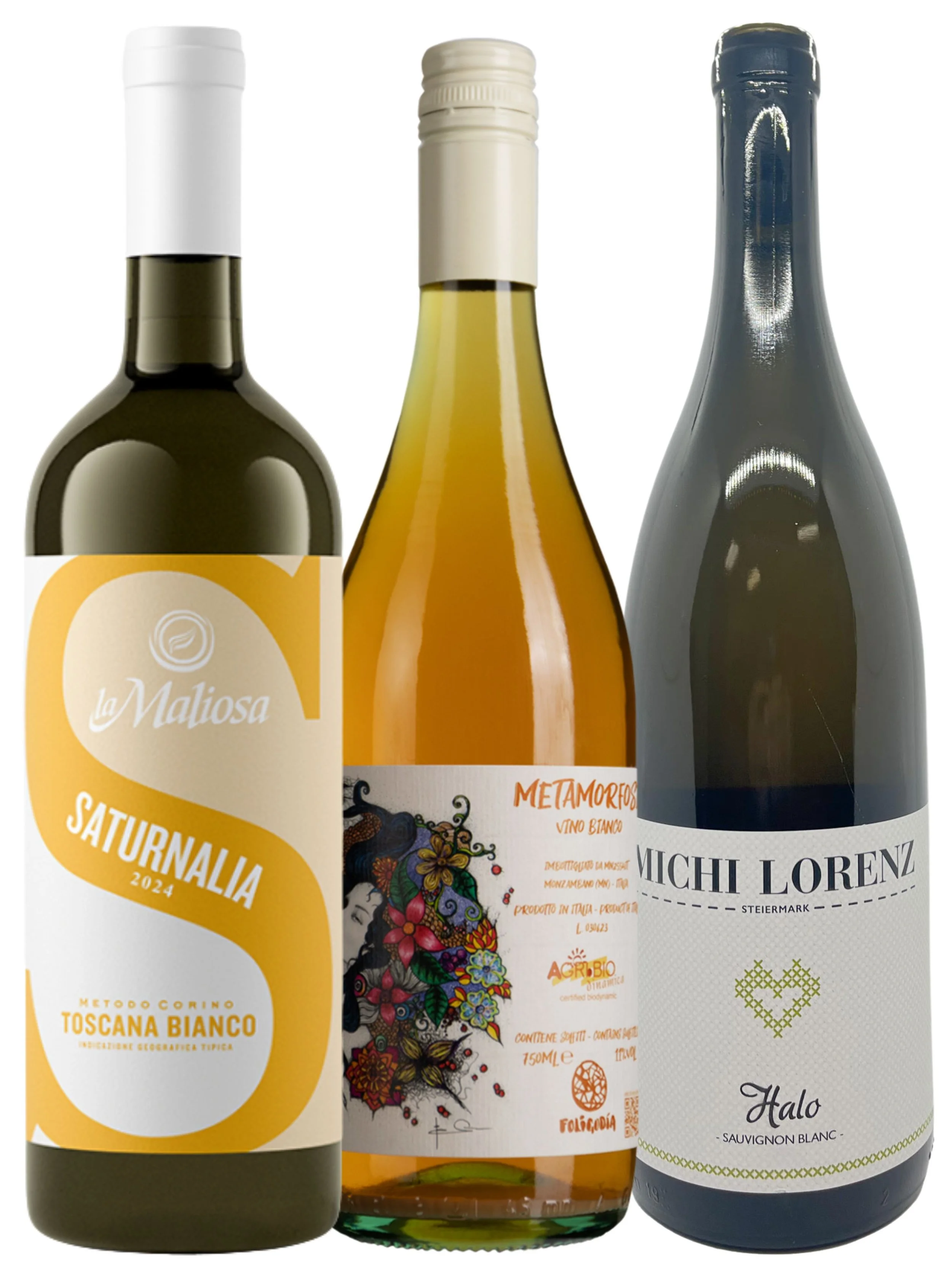Orange You Ready To Discover Orange Wine?
“Knock knock.” “Who’s there?” “Orange.” “Orange who?” “Orange you going to open the wine?”
What’s all this fuss about orange wine?
Is orange wine just a rosé?
What does orange wine taste like?
Orange wine is a growing trend in the wine world for several years. But, like many of the wines we carry, what are new trends have instead ancient old traditions, like Pet Nat wine.
We aren’t talking about wine made with oranges, although most have a likeness to the color orange, and some even smell and taste like orange. Rather orange wines are made using a style that falls in between red wine and white wine winemaking techniques, and is, in fact, made using the “opposite” style of how rose wine in made.
Orange wine is called by many other terms, most commonly skin contact wine, but also with many other names like skin fermented white wine, amber wine, and in Italian, “vino bianco macerato” or macerated white wine. These are all terms which refer to the same phenomenon: white wine grapes allowed to macerate on the skins (like a red wine often does). The term “orange wine” is most commonly credited to a British wine merchant David A. Harvey who first used the term to describe these wines, based on their usual color with an orange hue.
Why American wine lovers gravitating more and more to orange wines? So what is special about them? Orange you ready to learn? Jokes aside, let’s find out. .
What is Orange Wine?
In our Natural Wine Glossary, we defined an orange wine as: “Orange wines are also known as ‘skin contact white wines’. These wines made from white wine grapes are left, after pressing, in contact with the skins for a period of time, allowing the wine to absorb some of the color, much like red wines, and giving them a different flavor than their traditional white counterparts that are immediately removed from the skins.”
A very simplified comparison of red wine, white wine, and orange wine winemaking techniques.
You wouldn’t be reading this article unless you had even the slightest knowledge of how wine is made: you most likely already have an idea of how red and white wines are made.
To break it down to a simplified and very generalized process, with red wines you start from red grapes, you crush them, and then you leave the juice to ferment in contact with the skins of the grapes. The heat generated by the fermentation process helps to extract flavors, tannins and, of course, the red pigments. After fermentation is over, you drain the wine, you press the skins to extract the liquid wine and go about your aging processes before finally bottling.
White wines, on the contrary, are made in a very different way: you generally start from white grapes. Fun fact: you can make white wines from red grapes, but that’s a story for another day. Then, you carefully press the grapes paying attention to break the skins as gently as possible, and you get rid of the skins right away, collecting only pure juice. Then fermentation starts without any real skin contact taking place. After fermentation, you age, then bottle.
And voila, after using one of those two basic methods, you have yourself a red wine or white wine. But what if you used white grapes using the red wine method? If you instead start from a white grape variety, and you crush the grapes and leave the wine in contact with the grape skins for a long period of time, say days or even months, you end up with an orange wine.
Like an orange wine is a crossover of red and white wines, we think of orange wines as the opposite of rosés: whereas with rosé wines you are using a red grape to make wine with white wine techniques, with orange wines you are using white grapes with red wine techniques. That prolonged contact of the wine and juice with the skins of the grapes helps to extract flavors and give the wines the characteristic orange or amber color. This is also why orange wines can be referred to as “skin-contact whites”.
The History of Orange Wine
Moscato fermenting on the skins, to make the Case Corini Ciabot del Moreto orange wine.
The history of orange wines is inextricably linked to the history of wine itself. Because the winemaking process seems straightforward, intuitive and natural, it’s no wonder that orange wines have been around for millennia. After all, the historical method of winemaking used by farmers in the “Old World” was to leave the wine grapes to ferment in a container, leaving them to ferment on the skins for quite a while. They did this with all sorts of wine grapes, from red to white. So, back in the “old days,” a white wine typically had the orange hue color.
The home of orange wine is credited primarily to countries in South Caucasus, most specifically modern day Georgia. Some of the earliest traces of winemaking have been found in the country of Georgia, some dating to around 8000 years ago, orange wine included. Here, wines are still made traditionally in amphorae vessels, called qvevri, relying on long periods of skin contact, hence making a lot of orange wines. The Georgians have been one of the few peoples to never lose this tradition, keeping amphora wines a common, traditional practice.
Having extended periods of skin contact when making wine has a number of benefits: aside from imparting more intense flavors, aromas, and textures, which is why orange wine is having a moment now in modern times, there are also a lot of inherent health and practical benefits of long skin contact. For example, orange wines have more tannins which helps wine to last longer and is also more healthy thanks to the increased polyphenols. In terms of practicality, winemaking techniques, from ancient times up through the beginning of commercial winemaking “boom” in the mid 20th century, relied solely on native yeast fermentation. This refers primarily to yeast that is on the skins of the grape when harvesting. These native yeast particles allow for spontaneous fermentation. By having more exposure to skin contact during the fermentation process increases the likelihood of obtaining longer, more complete fermentation which allows for the creation of dry wine that is also more complex.
So these farmers in Georgia and many other places in the “Old World” knew what they were doing. In fact, in ancient times, drinking orange wines were commonplace. Look to history, for example, the Roman Empress Galla Placidia who loved a sweet Albana wine that she referred to as “liquid gold,” which we can imagine might just have been an orange wine. There are facts, as well, that point to orange wine production in the pre-Roman Etruscan culture in Maremma, modern day Tuscany. In fact, woman winemaker Antonella Manuli of La Maliosa pointed this out during a VeroTalk. It is why today she makes Saturnia Bianco, an orange wine made with the historic procanico grape (also known as Saturnalia Bianco orange wine).
Making orange wine was also a traditional practice in North Eastern Italy, in Friuli Venezia Giulia on the Slovenian border. However, in the 1950’s and 1960’s, and even a little earlier, the tradition fell out of favor with new winemaking technologies becoming the most popular way to make “clean” wines. It was thanks to Italian winemakers such as Radikon and Gravner that revitalized the tradition of orange wines in amphorae.
Of course, now in the last years, orange wines have taken on a whole new life thanks to the natural wine movement. Winemakers are looking to go back to the roots, the simple and good way of making wine with little intervention and are “rediscovering” the magic of white wine skin contact style!
Why Orange Wine?
Why would I want to pour some orange wine in my glass?
First, it is important to note that most orange wines won’t taste like your typical white wines. Pre-conceived notions of what a white variety typically is like, need to be forgotten: because of the additional skin contact, beyond just pigment, more aromas and flavors get absorbed into the wine with other compounds that are drawn out, like aromatic properties and tannins.
Orange wines are so called for their deep and gorgeous orang-y colors.
Most orange wines have some tannins which also distinguishes them from your ordinary white wines. Additionally, aromas and flavors more associated with older white wines, like nuts, dried herbs, and dried fruit come out more, even in “younger” or less aged orange wines. In general, orange wines have bolder flavors and are more intense than a younger or fresher white wine. In fact, you could say that an orange wine is a good go-between when trying to please both a red wine and a white wine drinker.
What inspires a winemaker to create this type of wine? 6th generation winemaker, Guido Corino of Case Corini told us, referring to their Ciabot del Moreto moscato orange wine, “The choice to utilize Moscato as an ‘orange wine’ was determined in part by its varietal characteristics (moscato giallo is a highly aromatic grape), but also from the idea of creating an ancient wine that retraces the path of our ancestors and the origins of wine.”
Interestingly, he went on to add something very important, “It is a type of wine, that, as orange wine has rose to popularity more recently, it has struggled to be understood. It is now, about ten years later, that orange wines have became a real fad, a productive trend. But, when orange wines started to become a ‘bubble’, many winemakers tried to jump on the bandwagon and produce them from vines that often, if vinified on the skins, were not well adapted to the style. Not only that, large companies, intrigued by the phenomenon and hungry for new segments to which to insert their wines, started to produce these skin macerated wines, chasing the market trend for natural wines. […] I want to underline how much more important it is in all wines, not only in orange wines, to research styles that go beyond the fashion of the moment to better represent the moment in which we taste them.”
That means it is important to craft orange wines carefully, picking the right grapes, and methodology for winemaking.
Enjoying Orange Wine
The best way to really understand orange wines is actually taste them. You will be surprised by the variety of flavors and aromas orange wines can offer, depending on variety and length of maceration on the skins. Our curated selection covers a variety of white wine grapes made in the orange style, and even one orange wine that was named one of the 15 best orange wines by VinePair! That wine would be the Saturnia (or Saturnalia) Bianco, made by woman winemaker Antonella Manuli of La Maliosa Farm and Winery, who specializes in natural wines. With three to four weeks of maceration on the skins, this Italian wine is like a sour beer or kombucha with a bright orange color, grippy tannins and a bouquet full of herbs and spicy ginger. Because of its uniqueness, it pairs great with a variety of foods, even more difficut wine and food pairings, like Asian cuisine, spicy dishes and fatty and creamy dishes too.
From another Italian winery, you can taste Febo’s Rolland Pecorino natural wine from Abruzzo. A deep color, it tastes of dried, chewy apricots, and is a big mouthful. It is one of those wines that you want to keep sipping it for its complexity, always discovering a new aspect of flavor or scent.
A glass of orange moscato Case Corini Ciabot del Moreto, swirling in the glass
Another unique and delicious orange wine the Case Corini Ciabot del Moreto Moscato Orange Wine. Made near Asti with moscato grapes, this meditation wine is anything but a traditional Moscato d’Asti. With luxurious flavors of candied ginger and dried apricots, it is a unique and special wine that you want to sip carefully, enjoying every moment and drop.
There are also non-Italian options too, like an Austrian Sauvignon Blanc, Michi Lorenz Halo and the Californian orange wine Gewürztraminer, Field’s L’Orange.
As mentioned previously, orange wines are a great go-between for white and red wine lovers, and can help beer drinker transition to wine. Who knew that orange wine might be the intersection where all three types of drinkers can come together to enjoy a drink!
These delicious wines, unique styles, and interesting producers might be why publications like Charleston Style & Design think that “This orange crush is having a moment”. In their article, you guessed it, Orange Vino, they name-dropped not only Vero as a “natural wine shop and specialty importer”, but also woman owned, Vero Producer La Maliosa, saying “Antonella Manuli makes wine on her own terms. In 2013, she founded La Maliosa (or ‘magical place’) on 140 hectares in the Maremma, a beautiful area of southwestern Tuscany with a wild, uncultivated side.” In the article, winemaker Antonella Manuli says that “Simply put, orange wines are white wines that behave like reds,” and “Not long ago, every white wine was orange. Before cellar technology evolved, there was no other way to make or preserve them.” An interesting read, the article especially highlights those Italian orange wines we talked about!
As a reminder, we sell our carefully curated portfolio of small production wines and olive oils to both businesses and consumers across the US:
We are enlarging our network of distributors around the country. Reach out to us if you are interested in distributing our wines.
We sell to wine stores and restaurants in certain states - contact us if you would like more info.
For you wine lovers out there, check out the orange wine selection in our online shop; we have several to pick from, with delivery right to you, for whenever you want to find an “orange wine near me;”
We also have great wine gift ideas, and award winning wine club for true wine explorers seeking to continually discover unique, sustainable and authentic small production wines they never had.
We do corporate gifts and sommelier guided wine tastings. Email us and we’ll tailor unique and sustainable corporate gift ideas.








